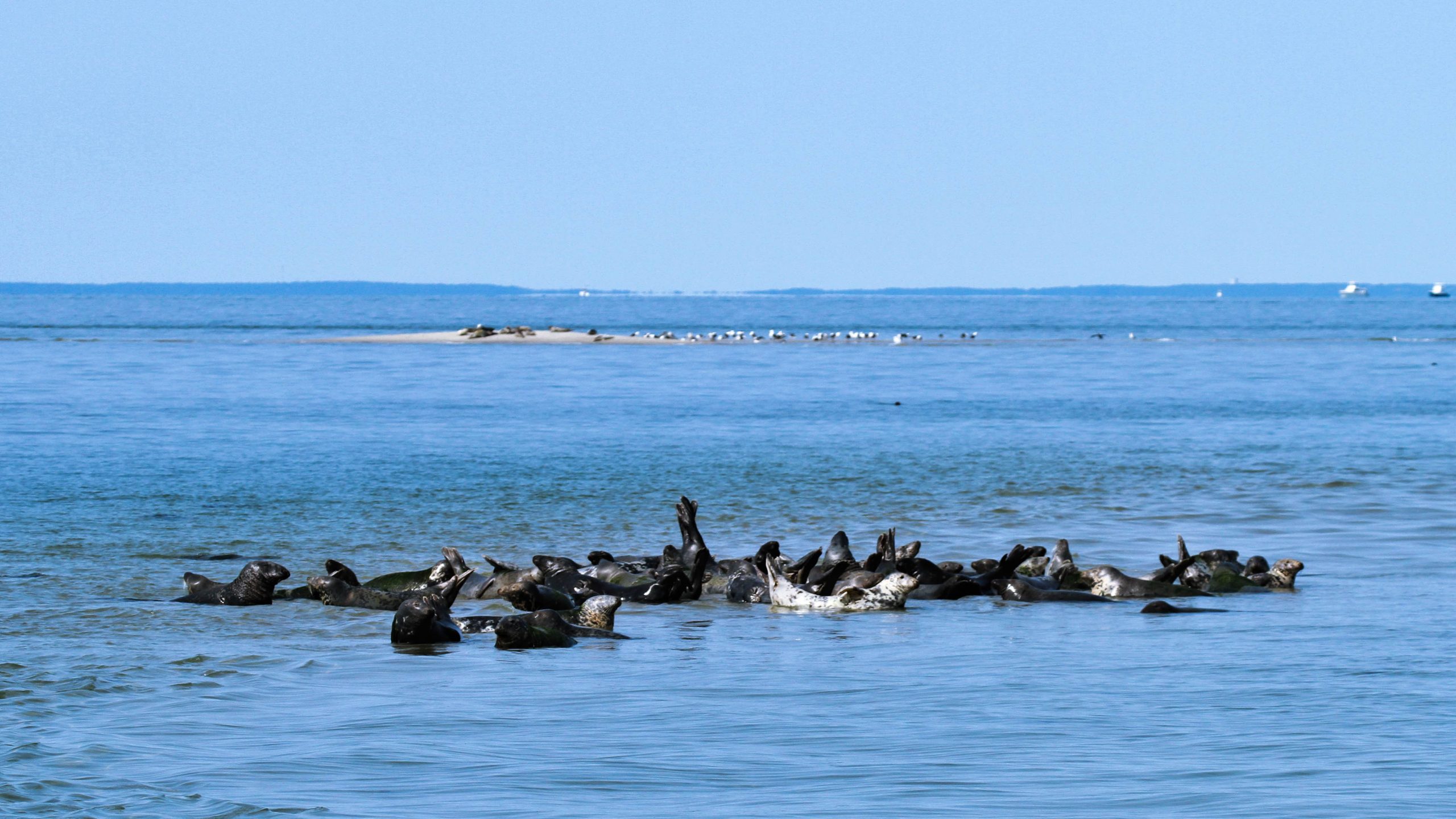
Using eDNA to Study Gray Seals with Julia Sunnarborg
By Nhan Chau, Media Intern & Daniel Timmermann
For any species, it is helpful to have a wide range of traits in their genetic pool. This diversity helps them evolve as a species and buffers them against future threats. Losing this protection could be a problem, especially for species that have experienced a dramatic decline in population like gray seals. Monitoring the gray seal’s genetic diversity is important to understanding their recovery. This can be difficult to do using traditional methods. Julia Sunnarborg, a University of Maine marine biology Ph.D. candidate with the NSF EPSCoR Track-1 Maine-eDNA grant, studies the use of eDNA as an alternative less invasive tool to measure gray seals’ genetic diversity.
Advised by Kristina Cammen (Assistant Professor, UMaine School of Marine Science) and Michael Kinnison (UMaine, Professor of Evolutionary Applications), Sunnarborg studies ecologically important recovering species and upper trophic organisms, specifically those in coastal systems. Because gray seals have experienced recent growth in number, she aims to understand their recovery and role in their ecosystem. Sunnarborg’s research looks at what this recovery means for the coastal ecosystems and whether eDNA can further aid this study.
While you can find gray seals in Maine they are much more abundant in Cape Cod, Massachusetts, so much of Sunnarborg’s research is done in collaboration with the Center for Coastal Studies located in Provincetown. Gray seals form haul-outs on beaches that they come back to regularly, therefore making it a reliable site that her team can use to study. Critical to Sunnarborg’s work, the Center for Coastal Studies helps collect eDNA samples and has provided two years’ worth of water samples and other data that Sunnarborg is currently analyzing and comparing.
Since gray seals are protected under the Marine Mammal Protection Act, it proves more challenging for the team to obtain the genetic information needed for the research. Without permits, researchers are not allowed to conduct invasive research that harasses the seals and disturbs their environment. Using eDNA Sunnarborg was able to acquire genetic sequences for further analysis while being minimally invasive. “For big groups of gray seals,” Sunnarborg said, “We have been able to detect them from 50 meters or even further away.” She explained that her team was able to detect the seals while staying the recommended distance of 50 meters away as advised by the National Oceanic and Atmospheric Administration (NOAA) using water samples.
Sunnarborg and her team continue to make advancements in their studies. “We’re starting to see the potential for eDNA to detect multiple things at once as opposed to a tissue sample that gives you one seal’s identity.” Sunnarborg said, “The idea that eDNA can produce multiple unique sequences at once is very exciting.” Sunnarborg believes that as scientists and researchers push eDNA limits more and more, having an open mind about how they can do things as well as adapting solutions from other fields is incredibly useful to the research.
Gray seals occupy a complicated space as a recovering species. Some worry about their impact on commercial fishing, but Sunnarborg explains, “It is not always crystal clear how much gray seals eat or what. That leaves room for conflict and misunderstanding about what it means for a predator to recover.” While public opinion about their recovery is complicated and mixed, the gray seal is a success story for species recovery. Through Sunnarborg’s research with Maine-eDNA, eDNA looks to be a viable sampling method that can help others better understand gray seals’ recovery and future survival. While there are still important questions about their recovery and role in the ecosystem, research progresses and Sunnarborg hopes to continue to deepen our understanding of the species.
